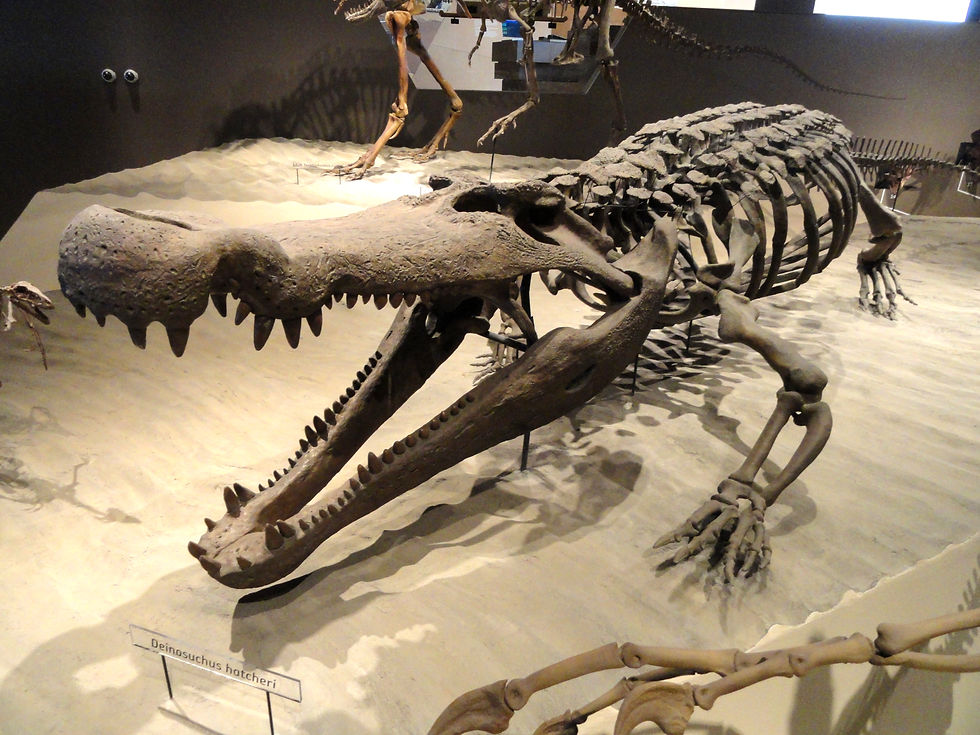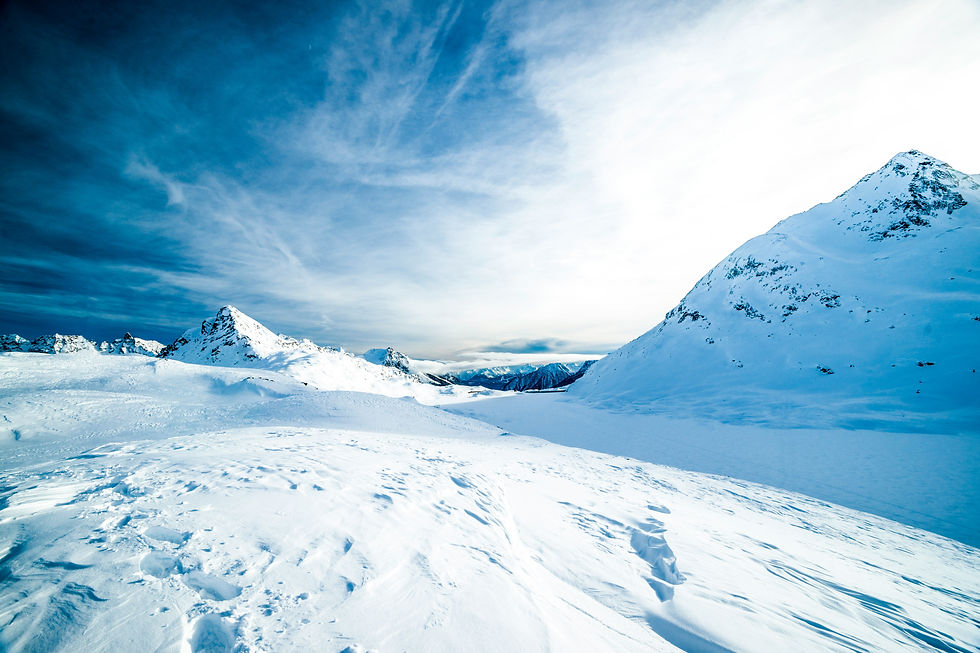Fossil Coast Explores East Cliff Beach at West Bay along the Jurassic Coast of Dorset
- Wayne Munday
- Sep 23, 2022
- 4 min read
Updated: Dec 18, 2025
East Cliff Beach at West Bay is one of the most visually striking and geologically important locations along Dorset’s Jurassic Coast. Located just south of the historic market town of Bridport, this dramatic coastline is defined by towering golden cliffs, rich natural history, and a deep geological record spanning the Early and Middle Jurassic periods. In collaboration with professional photographer Gary Holpin, Fossil Coast explores the landscapes, rock formations, and fossil heritage that make East Cliff so distinctive. From the Bridport Sand Formation to the limestone cap of the Inferior Oolite, West Bay offers a powerful insight into ancient shallow seas, tectonic change, and ongoing coastal erosion, making it a must-visit destination for geotourism, education, and coastal exploration.

Only a few minutes' drive south from Bridport towards the coast is the picturesque fishing village of West Bay formerly known as Bridport Harbour. West Bay is situated at the mouth of the river Brit a tidal river and former estuary where the iconic East and West cliff tower of the village on either side.
When you arrive and park up at West Bay my recommendation would be to make a beeline towards the award-winning West Bay Discovery Centre – it's free to enter. Located in the former historic West Bay Methodist Church locally known as the “Chapel on the Beach” you can't miss it.
The building dates to 1849 and was restored and re-opened as a visitor centre in 2018. The West Bay Discovery Centre is the perfect preamble to understanding the natural history of the local area of West Bay and getting the latest information about what's on. Especially in a place located along the Jurassic Coast with such a rich story of natural history. The centre will explain the history of West Bay, its shipbuilding past, and key events such as the Great Gail of 1824. Along with a “fish cam” there is a superb display supported by the Jurassic Coast Trust featuring the fossil finds by local fossil hunters Peter Langham, Robert (Bob) Chandler and David Sole. David Sole is also credited with finding a Scelidosaur now exhibited at Charmouth Heritage Coast Centre.
From my own experience, you will be warmly welcomed by the volunteers and trustees happy to help and answer any questions that you may have.

As you arrive in West Bay you are immediately drawn to the scale and golden colour of East Cliff. This cliff's formation was developed in a shallow marine environment possibly as a huge sandbar that over geologic time was significantly influenced by marine transgression and regression or sea-level changes.
This cliff is composed of the early Jurassic Period Bridport Sand Formation one of the major sandstones in the Jurassic Period sequence in Dorset. During the early Jurassic Period, the supercontinent of Pangea would begin to split apart and the Earth would experience a significant increase in plate tectonic movement, volcanic activity and orogenesis or mountain-building.
The Bridport Sand Formation was laid down during the Toarcian Age between 182 million and 174 million years ago. The second formation sitting comfortably on top of the Bridport Sand Formation between West Bay and Burton Hive along the East Cliff of West Bay is the middle Jurassic Period Inferior Oolite.

The Inferior Oolite is a younger marine limestone laid down between the Aalenian and Bathonian Ages approximately 174 – 168 million years ago. These coastal cliff exposures extend between East Cliff to Burton Cliff in Burton Bradstock. Interestingly, perched rather elegantly on top of East Cliff and offering exceptional 360-degree views of Lyme Bay and rural Dorset is the Bridport & West Dorset Golf Club.
The cliff's distinctive but superficial golden rust colour of the Bridport Sand Formation is a result of the oxidisation of fine grains of pyrite “fool’s gold” which is an iron sulphide mineral. The oxidation or the addition of oxygen to the pyrites changes this mineral from one with a metallic lustre to limonite a dull iron ore.
The Bridport Sand Formation has relatively few fossils due not only to its complex chemistry for limiting preservation but also because of its complex history of how these sediments were formed. Finding belemnites and ammonites along the foreshore is rare but not impossible.
The Bridport Sand Formation shows evidence of considerable reworking from the impact of storms, flooding, and bioturbation. The latter is the continuous effect of burrowing marine animals living in the sediments and their activity changes the chemical properties and transport of water throughout the formation.
The second formation along the East Cliff of West Bay is the middle Jurassic Inferior Oolite a hard marine limestone that caps the cliffs of the Bridport Sand Formation between West Bay and Burton Hive. Above the Inferior Oolite is the Frome Clay formerly known as Fuller's Earth.
In the UK there are several types of Oolites including the Great or Main Oolite known as Bath Stone and the Superior Oolite known as Portland Stone. Throughout history, Oolite has been quarried and used as a building stone. The Inferior Oolite limestone was laid down between the Aalenian and Bathonian Ages between 174 – 168 million years ago.
An Oolite is a spherical crystalline deposit of billions if not trillions of small concentric or radial structures called “ooliths”. These are composed mainly of calcium carbonate surrounding a nucleus of a sand grain or a tiny shell fragment. Due to the height of the Inferior Oolite (upwards of 40 meters), it is inaccessible. There is a paucity of fossils on the foreshore and only after cliff falls occur that fossils may be exposed. These include ferruginous oncoids (another great name!) or “snuff boxes” that are elliptically shaped brown iron-rich structures made up of successive layers of iron-oxidising bacteria encrusting fossils.
Inferior Oolite fossils may include ammonites, belemnite, molluscs, brachiopods i.e. Sphaeroidothyris sp. and ammonites including Strigoceras truelli, Parkinsonia sp. Lioceras sp., Rhaeboceras sp., Ancolioceras sp., Hyperlioceras sp., and Procerites sp. to name a few.
It is important to note that these cliffs nowadays are very dangerous and you are best not to get too close or at a minimum wear a safety hard hat and keep vigilant. East Cliff is best viewed at a distance and you will regularly see scientists surveying the beaches and cliffs to identify potential hazards and the effects of coastal erosion.








